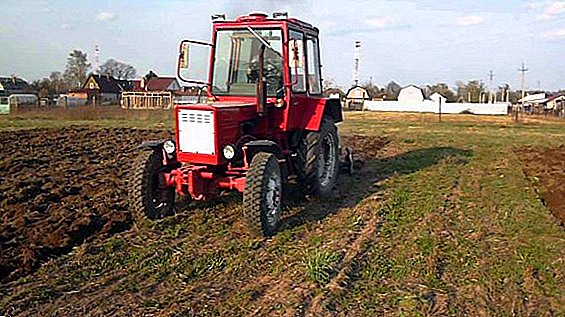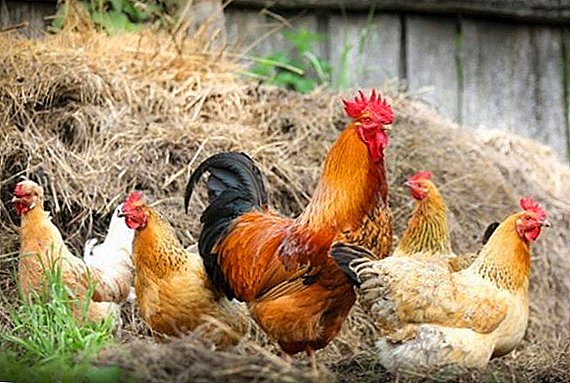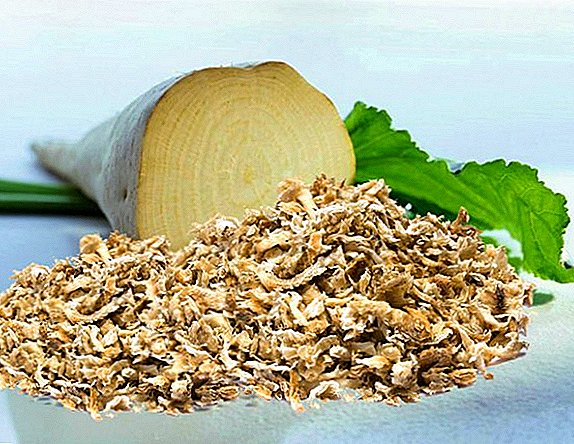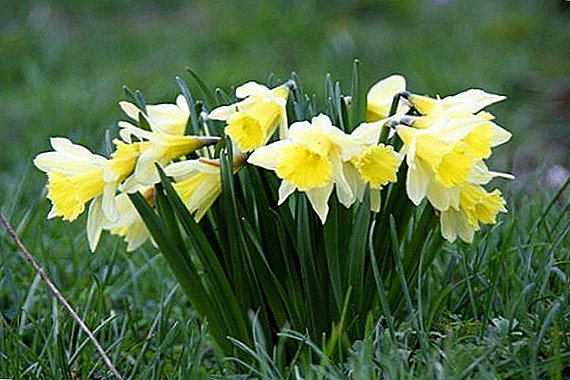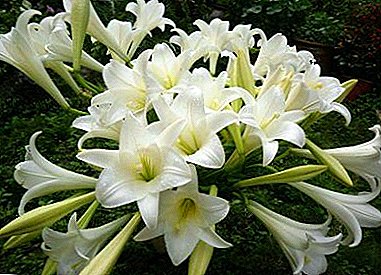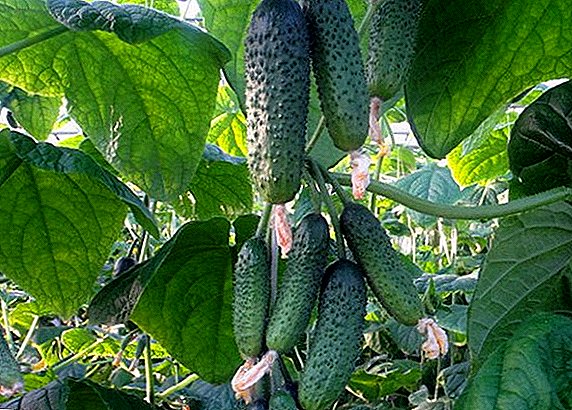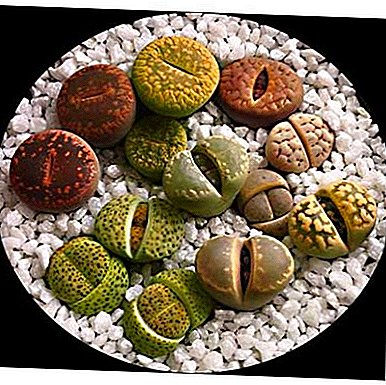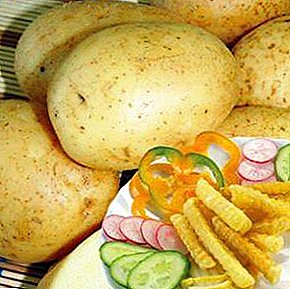
In today's article we will talk about the classic potato variety, which has gained popularity due to its impressive taste.
We are talking about potato Lasook, an important advantage of which is also the fact that to get a good harvest you do not need to spend money on numerous additives and fertilizers.
Read in our article a detailed description of the variety, get acquainted with its characteristics and peculiarities of cultivation, learn about the propensity to disease and damage by pests.
Lasock potato: variety description
| Grade name | Lasock |
| general characteristics | the most popular medium late table variety of Belarusian breeding with excellent taste |
| Gestation period | 80-120 days |
| Starch content | 15-22% |
| Mass of commercial tubers | 150-200 g |
| The number of tubers in the bush | 10-12 |
| Yield | 400-450 c / ha |
| Consumer quality | excellent taste, good razvarivaemost, suitable for mashed potatoes, roast potatoes, pancakes and industrial processing into chips |
| Recumbency | medium, tubers wake up early, storage in a cold room is required (+ 1-2 ° С) |
| Skin color | yellow |
| Pulp color | light yellow |
| Preferred growing regions | Central, Far East |
| Disease resistance | rarely resistant to late blight of the leaves, viruses, scab |
| Features of growing | sprouting recommended, suitable for planting by dividing tubers, negatively reacting to increased doses of fertilizers |
| Originator | Belarusian Research Institute of Potato |
 Potatoes Lasok was bred by Belarusian breeders and got into the State Register of both Belarus and Russia (at that time the USSR) in 1988. It can be grown without problems in all regions of the Russian Federation, including the northern ones.
Potatoes Lasok was bred by Belarusian breeders and got into the State Register of both Belarus and Russia (at that time the USSR) in 1988. It can be grown without problems in all regions of the Russian Federation, including the northern ones.
It refers to medium-late and late-ripening varieties, depending on the region and climatic conditions, the growing season may take 80 - 100 or 100 - 120 days.
Possesses excellent yield, on average, it turns out up to 50 / ha of delicious potatoes, and often this figure increases to 60 t / ha. On the other hand, it cannot boast good keeping quality. It has the ability to actively germinate at a temperature of 5 - 7 ° C.
The table below shows the keeping quality of other varieties of potatoes:
| Grade name | Stickiness |
| Lasock | average |
| Innovator | 95% |
| Bellarosa | 93% |
| Karatop | 97% |
| Veneta | 87% |
| Lorch | 96% |
| Margarita | 96% |
| Courage | 91% |
| Grenada | 97% |
| Vector | 95% |
| Sifra | 94% |
 Read helpful information about storing potatoes. Everything about temperature, timing, location and the problems that arise.
Read helpful information about storing potatoes. Everything about temperature, timing, location and the problems that arise.And also about how to store roots in winter, in vegetable stores, in an apartment or cellar, on a balcony, in drawers, in a refrigerator and in peeled form.
Tubers of this variety are large and heavy. The average weight of a commercial tuber can often reach as much as 200 g. The shape of the tubers is oval, they have a light cream color of the peel covered with a characteristic net. The flesh is almost the same color as the skin and contains up to 22% of starch. Eyes rare and deep set. One shrub can form 10 - 12 such fruits.
Compare this characteristic of potato, as the content of starch in it can be compared using the table below:
| Grade name | Starch content |
| Lasock | 15-22% |
| Lady claire | 11-16% |
| Labella | 13-15% |
| Riviera | 12-16% |
| Gala | 14-16% |
| Zhukovsky early | 10-12% |
| Melody | 11-17% |
| Alladin | up to 21% |
| Beauty | 15-19% |
| Mozart | 14-17% |
| Bryansk delicacy | 16-18% |
Bushes high and erect. Have a very powerful stem and developed tops. The leaves are large, characterized by a characteristic hard down, which prevents the Colorado potato beetle from approaching the plant. The flowers in this variety have a multi-colored inflorescence with white corollas, bloom long and abundantly.
A photo
The photo below shows the Lasock potato variety.





Features grade
The main positive feature of the variety Lasok is considered to be its table quality. In addition to excellent taste, this potato has an enviable crispness and is well boiled soft. Because of this, it is suitable for cooking almost any kind of food, and best of all it produces mashed potatoes and various soups. High starchiness can ensure the processing of potatoes for production purposes.
 Read more about the various properties of potatoes.
Read more about the various properties of potatoes.Learn all about what dangerous solanine, the benefits and harms of raw potatoes, why eat sprouts and juice.
For a good harvest plant fit any soil. In this regard, the grade is not illegible. The only thing you need to remember is that on your loams your germinated tubers are buried to a depth of 5 to 7 cm, and on sandy bottom soil the depth of digging increases to 10 to 12 cm.
The germination of fruits is best carried out in a lighted place with a temperature of 7 ° C. Also, due to the large size of the roots, it makes sense to divide the tubers into 2 parts to obtain more planting material.
When planting sprouts into the soil, it is recommended to use a 70 x 35 scheme. The planting itself takes place in spring in April or May (depending on the climate). In the wells before planting it is recommended to add a mixture of sand and humus, as well as water with a solution of potassium permanganate and ash.
IMPORTANT! Chlorine-containing potash fertilizers are not recommended because they have the unpleasant property of reducing the starch content of fruits.
Read more about how to fertilize potatoes, how and when to feed them, which ones are the best and what is the use of minerals, how to feed potatoes properly when planted.
 Further care of the plant consists of:
Further care of the plant consists of:
- Standard hilling, weed, weed removal and periodic watering (not too frequent if you live in the central and northern regions);
We bring to your attention detailed materials on whether hilling is necessary, what technical means it is better to carry out than manual hilling differs from that produced by a walk-behind tractor, whether it is possible to get a good harvest without weeding and hilling.
- The best time to make dressings - the growing season. It is recommended to make a small amount of organic fertilizers that contain potassium and phosphorus.
- The first hilling should always be carried out after the sprouts of potatoes reach 10 - 12 cm in height.
- Do not forget about mulching, it can get rid of weeds and maintain the desired level of soil moisture.
Diseases and pests
Not failed and the immune system of this class. Lasook is a potato variety that will delight you with its enviable resistance to late blight, verticillium wilt, cancer, blackleg, scab, nematode, and S, M, Y, L viruses, Alternaria, and Fusarium.
An amazing discovery will be the fact that the Colorado potato beetle avoids the bushes of these plants. Because of the strong pubescence, the Colorado beetles and their larvae simply cannot approach their leaves.
So in general, we can say that this variety is protected from all sorts of diseases and pests. However, you may be useful information about such common as Medvedka, potato moth, wireworm, scoop butterfly, cicadas and aphids.
Summing up it becomes clear that Lasok is not for nothing that has enjoyed success for many years. It is easy to grow, does not require numerous supplements and fertilizers, as well as perfectly protected from various evils.
So, if you want to pamper your family with delicious potatoes or grow it for sale and processing for starch, then you should definitely pay attention to the variety Lasok.
Read also about other interesting ways of growing potatoes. All about modern Dutch technology, about the cultivation of early varieties and about in which countries this root crop is most popular. And also about alternative methods: under straw, in bags, in barrels, in boxes, from seeds.
We also offer to familiarize yourself with other varieties of potatoes that have different ripening terms:
| Middle late | Medium early | Mid-season |
| Vector | Gingerbread Man | Giant |
| Mozart | Fairy tale | Tuscany |
| Sifra | Ilinsky | Yanka |
| Dolphin | Lugovskoy | Purple Haze |
| Crane | Santa | Openwork |
| Rogneda | Ivan da Shura | Desiree |
| Lasock | Colombo | Santana | Aurora | Manifesto | Typhoon | Skarb | Innovator | Alvar | Magician | Crown | Breeze |


